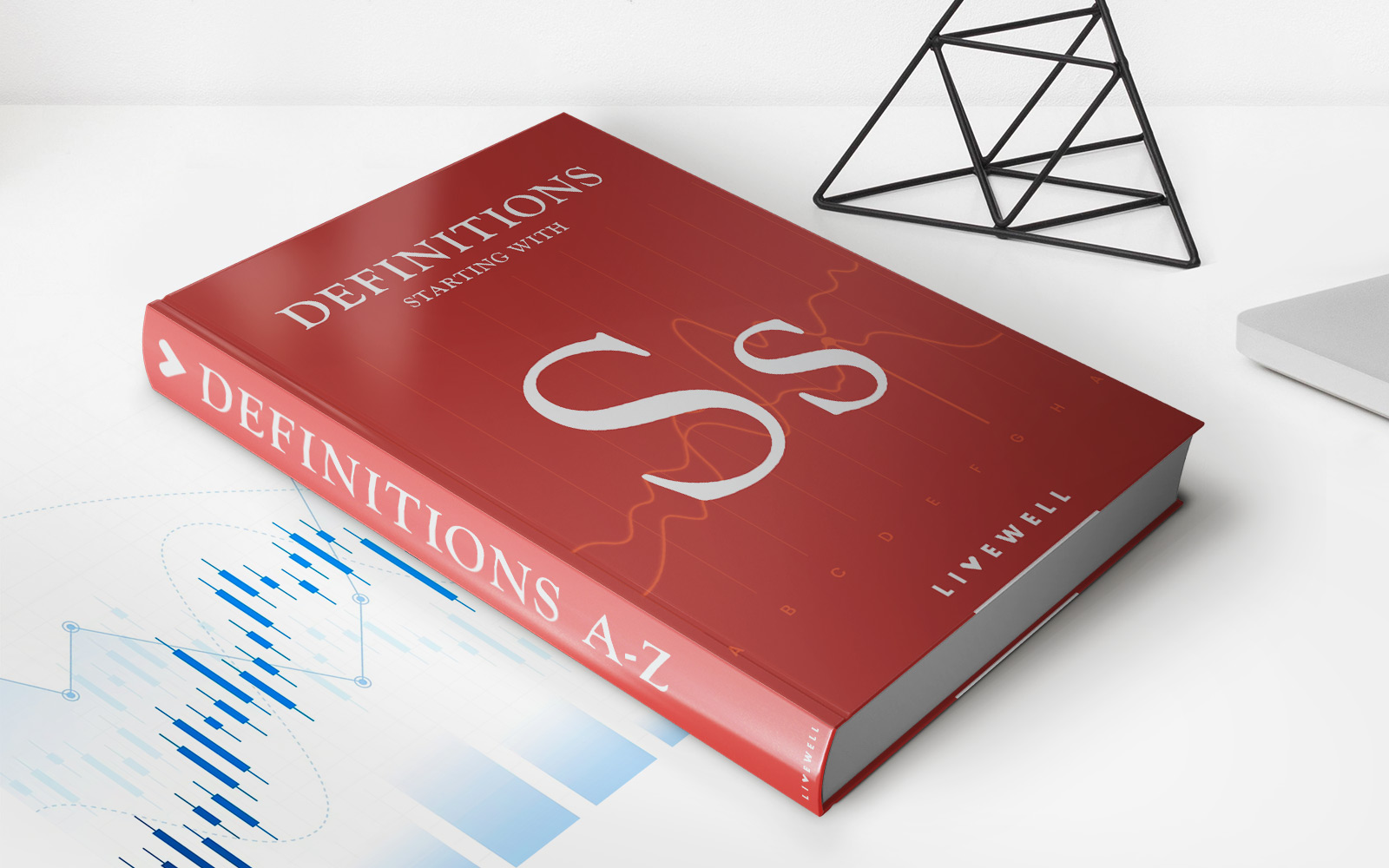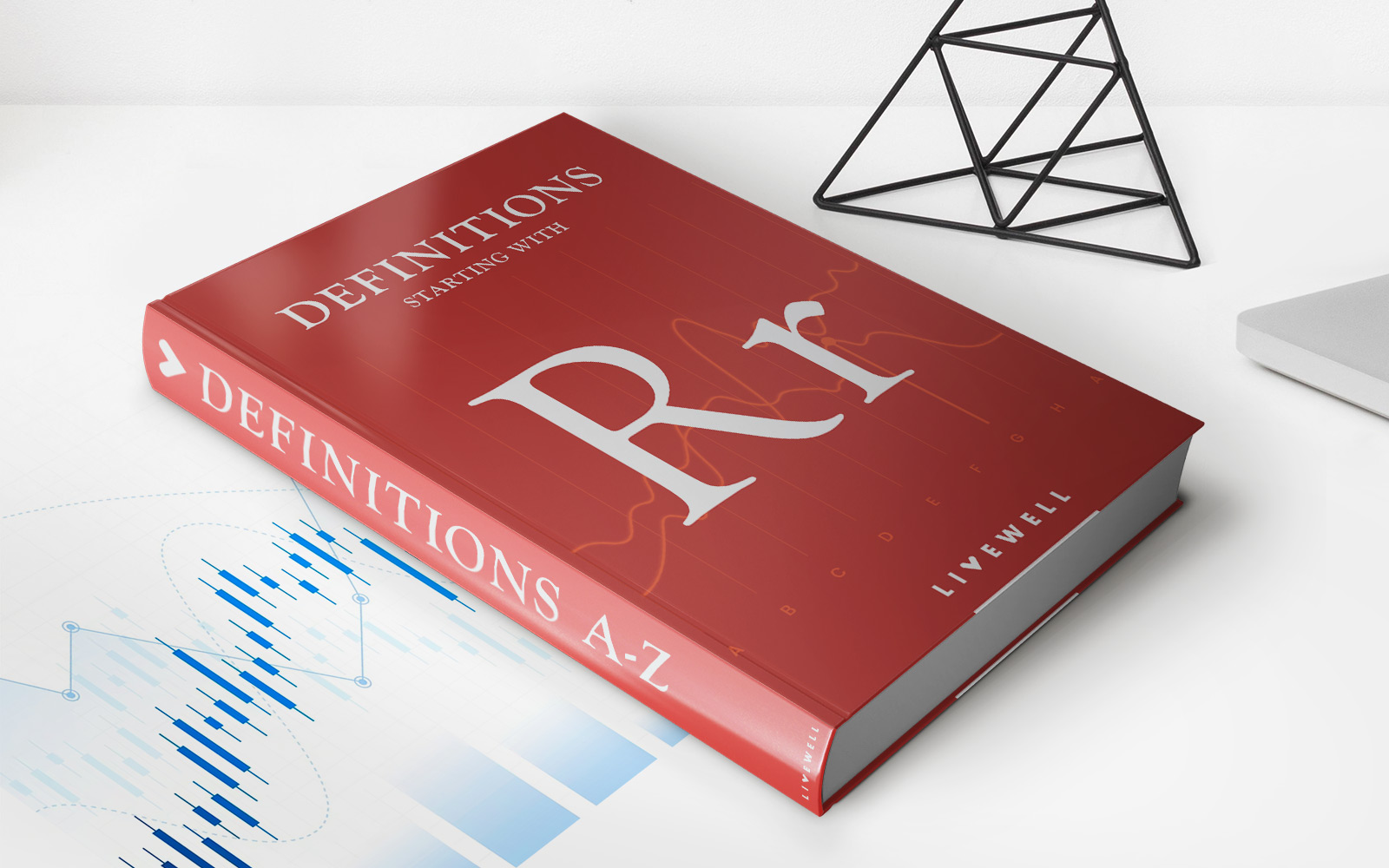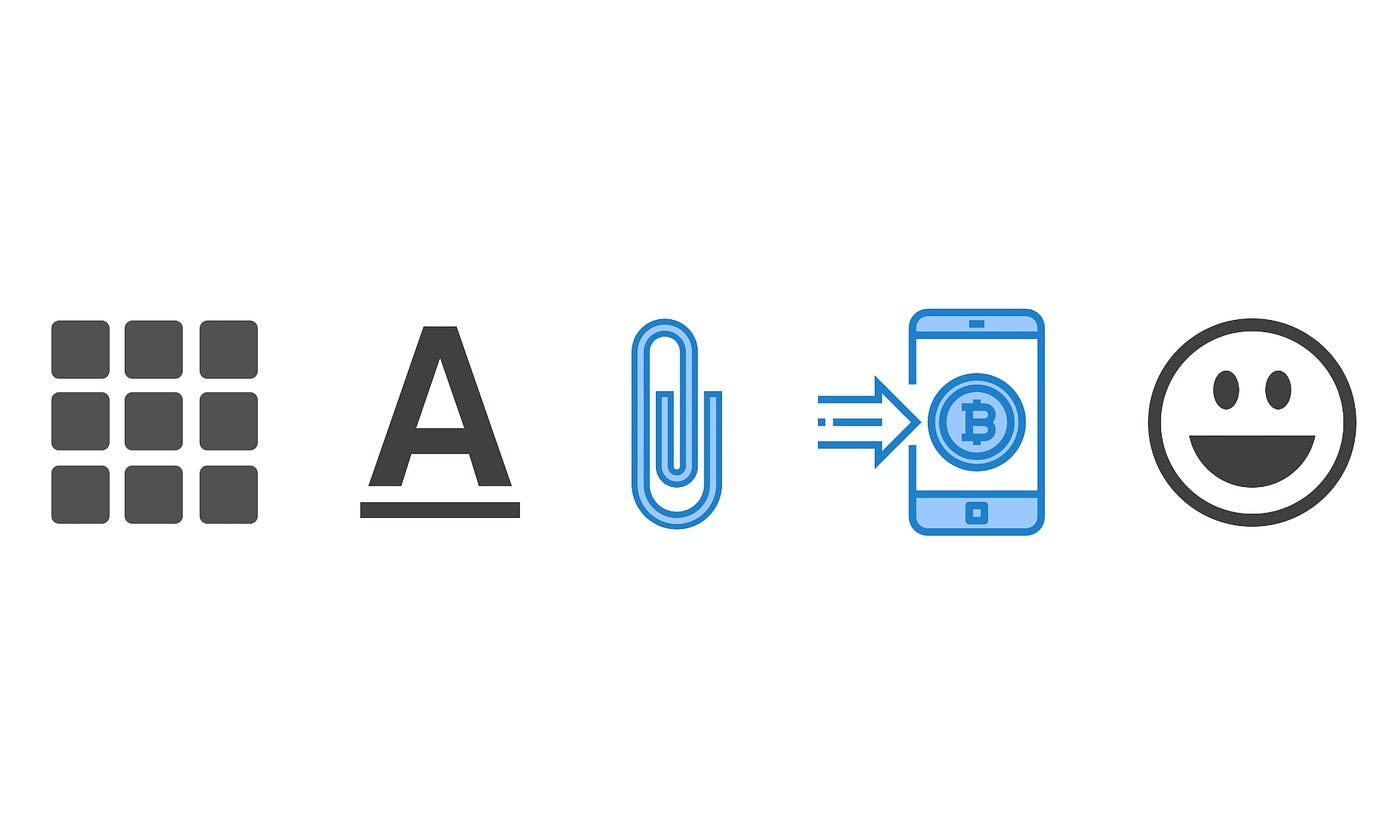Home>Finance>What Legal Protection Do Liquid Assets Have In Nursing Homes?


Finance
What Legal Protection Do Liquid Assets Have In Nursing Homes?
Modified: February 21, 2024
Discover the legal safeguards available for liquid assets in nursing homes to protect your finances. Gain peace of mind knowing your financial interests are secure.
(Many of the links in this article redirect to a specific reviewed product. Your purchase of these products through affiliate links helps to generate commission for LiveWell, at no extra cost. Learn more)
Table of Contents
Introduction
When it comes to planning for the future, particularly in regards to long-term care needs, understanding the legal protection and implications of your financial assets is crucial. For those considering nursing home care, the treatment of liquid assets is of utmost importance.
Liquid assets are easily converted to cash and include bank accounts, stocks, bonds, and other investments. These assets can play a significant role in determining eligibility for Medicaid and can greatly impact an individual’s ability to pay for care in a nursing home. It is therefore essential to have a comprehensive understanding of the legal protections available for these assets.
In this article, we will explore the various legal aspects surrounding liquid assets in nursing homes. We will discuss the importance of legal protection, the Medicaid asset limits, the distinction between exempt and non-exempt assets, the impact of transferring assets and gifting, the look-back period, spousal protection, the use of trusts and annuities, and the concept of estate recovery.
By familiarizing yourself with these legal considerations, you will be better equipped to make informed decisions regarding your liquid assets and protect your financial well-being during your later years.
Definition of Liquid Assets
Liquid assets are financial resources that can be easily converted into cash without incurring significant transaction costs. They include bank accounts, certificates of deposit, money market accounts, stocks, bonds, mutual funds, and other investments that can be readily bought or sold on the financial market.
These assets are considered “liquid” because they can be quickly accessed and used for various purposes, such as paying bills, covering expenses, or making investments. Unlike tangible assets, such as real estate or vehicles, liquid assets can be readily converted into cash, providing individuals with a degree of financial flexibility and freedom.
For individuals considering nursing home care, the treatment of liquid assets is particularly important. Medicaid, the government program that helps cover the cost of long-term care for eligible individuals, has strict asset limits. Liquid assets are included in these limits and can impact an individual’s eligibility for Medicaid assistance.
It is essential to understand the distinction between liquid assets and other types of assets when planning for long-term care. While tangible assets, like a home or a car, have value and can contribute to an individual’s overall wealth, they are not considered liquid because they cannot be easily and quickly converted into cash without incurring significant transaction costs.
Furthermore, the value of liquid assets may fluctuate over time based on market conditions. Investments in stocks, bonds, and mutual funds can gain or lose value, which can impact the overall worth of an individual’s liquid assets.
Overall, understanding the definition and nature of liquid assets is crucial for individuals planning for long-term care. Being aware of the distinction between liquid and non-liquid assets can help individuals make informed financial decisions and take the necessary steps to protect their wealth and eligibility for government assistance programs like Medicaid.
The Need for Legal Protection
When it comes to nursing home care and the treatment of liquid assets, the need for legal protection cannot be overstated. Without proper safeguards in place, individuals risk depleting their assets and compromising their financial well-being.
One of the primary reasons for seeking legal protection is to ensure eligibility for Medicaid, a government program that provides financial assistance for long-term care. Medicaid has strict asset limits, and individuals must meet these requirements to qualify for coverage. Without proper planning and legal strategies, individuals may find themselves exceeding these asset limits and becoming ineligible for Medicaid assistance.
Legal protection also plays a crucial role in preserving assets for the individual and their loved ones. Without proper safeguards, assets can be at risk of being seized or depleted to cover the costs of nursing home care. By implementing legal strategies, individuals can protect their assets, ensuring there are resources available for their own use or to pass on to their beneficiaries.
Another reason for seeking legal protection is to navigate the complex regulations surrounding long-term care and Medicaid. The laws and regulations pertaining to Medicaid eligibility and asset protection can be intricate and confusing. Without expert legal guidance, individuals may inadvertently make mistakes or overlook important factors, resulting in adverse financial consequences.
Legal protection can also provide peace of mind for individuals and their families. By putting legal measures in place, individuals can have a sense of security, knowing that their assets are being protected and their best interests are being safeguarded. This allows individuals and their families to focus on other important aspects of care and well-being.
In summary, legal protection is essential when it comes to nursing home care and the treatment of liquid assets. It ensures eligibility for Medicaid, preserves assets for the individual and their loved ones, helps navigate complex regulations, and provides peace of mind. By seeking expert legal advice and implementing appropriate strategies, individuals can protect their financial well-being and secure a more stable future.
Medicaid Asset Limits
Medicaid, the government program that helps cover the cost of long-term care for eligible individuals, has strict asset limits that must be met to qualify for assistance. These asset limits vary from state to state, but they generally aim to ensure that individuals with sufficient assets are not receiving financial aid when they can afford to pay for their care themselves.
To qualify for Medicaid, individuals must meet both income and asset thresholds. The income limits pertain to the individual’s monthly income, while the asset limits refer to the total value of the individual’s assets.
The asset limits for Medicaid are typically quite low, especially for individuals applying as single applicants. These limits are designed to prevent individuals from “spending down” their assets to qualify for Medicaid by limiting the amount of resources they can retain.
It is important to note that not all assets are counted towards the Medicaid asset limits. Certain assets, known as exempt assets, are excluded from consideration when determining eligibility. Examples of exempt assets may include an individual’s primary residence, personal belongings, a vehicle, and certain types of insurance policies.
Non-exempt assets, on the other hand, are those that are counted towards the asset limit. Liquid assets, such as bank accounts, stocks, bonds, and other investments, are typically considered non-exempt assets and must be taken into account when determining Medicaid eligibility.
If an individual’s assets exceed the Medicaid asset limits, they may be required to “spend down” their resources before becoming eligible for Medicaid assistance. This means using the excess assets to pay for their care until they meet the asset limits. However, it is important to carefully plan and navigate this process to avoid depleting assets unnecessarily and maximize the benefits received.
It is crucial to understand the Medicaid asset limits specific to your state and to seek expert advice to navigate the complex regulations. By understanding the limits and properly managing your assets, you can ensure eligibility for Medicaid while preserving your financial well-being.
Exempt and Non-Exempt Assets
When it comes to Medicaid eligibility and the treatment of assets, it’s important to understand the distinction between exempt and non-exempt assets. Exempt assets are assets that are not counted towards the Medicaid asset limits and are therefore protected from being used to pay for nursing home care. Non-exempt assets, on the other hand, are counted towards the asset limits and may need to be spent down to qualify for Medicaid assistance.
The specific guidelines for exempt and non-exempt assets vary between states, so it’s crucial to consult with an expert or refer to your state’s Medicaid program for accurate and up-to-date information. However, there are some common examples of exempt and non-exempt assets that can provide a general understanding:
Exempt Assets:
- Primary Residence: In most cases, an individual’s primary residence is considered an exempt asset. There may be a limit on the equity value of the home, but it is generally protected.
- Personal Belongings: Items such as clothing, furniture, and household goods are typically considered exempt assets.
- One Vehicle: Usually, one personal vehicle, such as a car or a motorcycle, is considered an exempt asset.
- Prepaid Burial or Funeral Plans: Funds set aside for burial or funeral expenses may be exempted from consideration.
- Irrevocable Funeral Trusts: Certain types of irrevocable funeral trusts can be exempt assets if they meet specific criteria.
- Life Insurance Policies: In general, term life insurance policies are considered exempt assets. However, cash value life insurance policies may be subject to different rules.
Non-Exempt Assets:
- Bank Accounts: Savings accounts, checking accounts, certificates of deposit, and other liquid assets held in financial institutions are typically considered non-exempt assets.
- Investments: Stocks, bonds, mutual funds, and other investment vehicles are generally considered non-exempt assets.
- Rental Properties: Real estate properties, such as rental homes or apartment buildings, are usually categorized as non-exempt assets.
- Additional Vehicles: Any additional vehicles beyond the exempted one may be considered non-exempt assets.
- Additional Properties: Non-primary residences, such as second homes or vacation properties, are typically regarded as non-exempt assets.
Again, it’s crucial to consult with an expert or your state’s Medicaid program for the most accurate and detailed information specific to your situation. By understanding the difference between exempt and non-exempt assets, you can better plan and protect your assets while navigating the Medicaid eligibility requirements.
Transferring Assets and Gifting
When it comes to Medicaid eligibility and asset protection, transferring assets and gifting can have significant implications. It is important to understand the rules and restrictions surrounding these actions to ensure compliance with Medicaid regulations.
Transferring assets refers to the act of transferring ownership or control of an asset from one individual to another. This can include transferring property deeds, bank accounts, or other valuable assets. Gifting, on the other hand, involves giving assets to another person as a gift, without expecting anything in return.
Medicaid has established strict rules regarding asset transfers and gifting to prevent individuals from improperly disposing of their assets to qualify for Medicaid assistance. These rules are in place to ensure fairness and prevent individuals from exploiting the system.
The first important concept to understand is the “look-back” period. This refers to the timeframe during which Medicaid examines an individual’s financial transactions and asset transfers. The look-back period in most states is typically five years, meaning Medicaid will review any asset transfers or gifting that occurred within the five years prior to the application for Medicaid coverage.
If an individual has made any improper transfers or gifts during the look-back period, Medicaid may impose a penalty period of ineligibility. The length of the penalty period is determined based on the value of the transferred assets and the average cost of nursing home care in the individual’s state.
However, there are certain exceptions and allowable transfers that can be made without incurring penalties. These may include transfers to a spouse, transfers to certain disabled individuals or children under 21, or transfers of exempt assets. It is crucial to consult with an expert to fully understand the permissible transfers and gifts allowed under Medicaid rules.
When considering transferring assets or gifting, it’s important to weigh the potential consequences and benefits. While these actions may be undertaken with good intentions, they can have unintended consequences on Medicaid eligibility and asset protection. Consulting with an attorney specializing in elder law or Medicaid planning can help ensure compliance with regulations and make informed decisions regarding asset transfers and gifting.
In summary, transferring assets and gifting can have significant implications on Medicaid eligibility and asset protection. Understanding the rules, restrictions, and exceptions surrounding these actions is crucial to avoid penalties and ensure compliance with Medicaid regulations. Consulting with a knowledgeable professional can provide the guidance needed to make informed decisions regarding transfers and gifting.
Look-Back Period
When it comes to Medicaid eligibility and asset protection, understanding the concept of the look-back period is crucial. The look-back period is a designated timeframe during which Medicaid scrutinizes an applicant’s financial transactions and asset transfers to determine if any improper transfers have been made to qualify for Medicaid coverage.
The look-back period is typically set at five years, although it may vary slightly depending on the specific Medicaid program and state regulations. This means that Medicaid will review any transfers or gifting of assets that occurred within the five years prior to the application for Medicaid coverage.
The purpose of the look-back period is to prevent individuals from disposing of their assets or transferring them to others in order to meet the Medicaid asset limits and qualify for assistance. It is designed to ensure fairness and prevent individuals from depleting their assets intentionally to secure government support for long-term care costs.
If an individual has made any improper transfers or gifts during the look-back period, Medicaid may impose a penalty period of ineligibility. The length of the penalty period is calculated based on the total value of the transferred assets and the average cost of nursing home care in the individual’s state.
It is important to note the distinction between permissible transfers and improper transfers during the look-back period. Permissible transfers may include transfers to a spouse, transfers to certain disabled individuals or children under 21, or transfers of exempt assets. These transfers are generally not subject to penalties.
Improper transfers, on the other hand, involve attempting to hide or diminish assets to meet the Medicaid asset limits. These transfers can result in the imposition of a penalty period of ineligibility, where Medicaid coverage is delayed for a certain period of time.
It is crucial to plan ahead and carefully consider any asset transfers or gifting during the look-back period. Consulting with an attorney specializing in elder law or Medicaid planning can help ensure compliance with regulations and make informed decisions regarding asset transfers and their impact on Medicaid eligibility.
In summary, the look-back period is a crucial aspect of Medicaid eligibility and asset protection. Understanding the rules and consequences surrounding asset transfers during this period is essential to avoid penalties and ensure compliance with Medicaid regulations. Consulting with a knowledgeable professional can provide the guidance needed to navigate the complexities of the look-back period and make informed decisions regarding asset transfers.
Spousal Protection
When it comes to Medicaid and long-term care planning, spousal protection measures are in place to ensure that the well-being of the non-applicant spouse is considered. These measures aim to prevent the healthy spouse from experiencing undue financial hardship as a result of the other spouse’s need for nursing home care.
One of the key aspects of spousal protection is the determination of the Community Spouse Resource Allowance (CSRA). The CSRA sets a maximum limit on the assets that the healthy spouse, also known as the community spouse, can retain while the other spouse receives Medicaid assistance for long-term care.
The CSRA varies from state to state, but it is typically set at a percentage of the total countable assets of the couple, up to a maximum threshold. The purpose of the CSRA is to ensure that the community spouse has sufficient resources to maintain a certain level of financial stability and quality of life.
In addition to the CSRA, spousal protection measures also include the Monthly Maintenance Needs Allowance (MMNA). The MMNA allows the community spouse to receive a portion of the institutionalized spouse’s income if it is deemed necessary to meet their monthly living expenses.
The MMNA is determined by subtracting the community spouse’s income (if any) from a statutorily established minimum maintenance needs allowance. If the community spouse’s income is below the minimum threshold, they may be entitled to receive a portion of the institutionalized spouse’s income, up to the maximum MMNA limit set by the state.
Spousal impoverishment rules are also implemented to protect the community spouse from being left financially vulnerable. These rules prevent a healthy spouse from being left without sufficient income or assets when their partner requires long-term care.
It’s important to note that the application of spousal protection measures can be complex and varies from state to state. Consulting with an elder law attorney or a Medicaid planner is highly recommended to understand the specific rules and regulations that apply in your jurisdiction.
In summary, spousal protection measures exist to safeguard the financial well-being of the healthy spouse when the other spouse requires nursing home care and Medicaid assistance. These measures include the Community Spouse Resource Allowance (CSRA), the Monthly Maintenance Needs Allowance (MMNA), and spousal impoverishment rules. By understanding these protections and working with the appropriate professionals, couples can navigate the Medicaid system while ensuring that both spouses are financially protected.
Trusts and Annuities
When it comes to Medicaid planning and protecting assets, trusts and annuities can be important tools. These legal instruments can help individuals and families navigate the complex regulations surrounding Medicaid eligibility while preserving their assets.
A trust is a legal arrangement where a person, known as the grantor, transfers assets to a trustee who manages those assets for the benefit of designated beneficiaries. The main purpose of establishing a trust is to protect assets from being counted towards Medicaid eligibility while still ensuring that they are available for the individual’s benefit.
One commonly used trust in Medicaid planning is an irrevocable Medicaid trust. By transferring assets to an irrevocable trust, the grantor effectively removes those assets from their ownership and control. As a result, these assets are no longer considered countable resources for Medicaid eligibility purposes.
Another important tool in Medicaid planning is annuities. An annuity is a financial contract between an individual and an insurance company. It involves the individual making a lump-sum payment or periodic payments to the insurance company in exchange for regular annuity payments over a specified period or for life.
Annuities can be structured in a way that allows individuals to convert countable assets, such as cash or investments, into a non-countable income stream. By using annuities, individuals can turn their assets into a source of income that is not considered as a countable resource for Medicaid eligibility purposes.
It is important to note that establishing a trust or purchasing an annuity for Medicaid planning purposes requires careful consideration and adherence to specific rules and regulations. Medicaid has strict guidelines regarding the timing and structure of these instruments to prevent individuals from using trusts and annuities solely for the purpose of qualifying for Medicaid.
Consulting with an attorney who specializes in elder law or Medicaid planning is essential to ensure that trusts and annuities are set up correctly and in compliance with Medicaid regulations. They can provide guidance on which type of trust or annuity best suits a person’s individual circumstances and help navigate the complexities of Medicaid planning.
In summary, trusts and annuities can be effective tools for Medicaid planning and asset protection. By utilizing these legal instruments, individuals and families can preserve their assets while still meeting Medicaid eligibility requirements. However, it is crucial to seek professional guidance to ensure that trusts and annuities are established in accordance with Medicaid regulations.
Estate Recovery
Estate recovery is a process by which state government agencies seek reimbursement for the costs of Medicaid benefits provided to an individual during their lifetime. When a Medicaid recipient passes away, the state may attempt to recover the funds spent on their care from their estate or other assets, such as a home or bank accounts, that they leave behind.
The goal of estate recovery is to recoup the costs incurred by the state for providing Medicaid benefits, reducing the burden on taxpayers. However, it is important to note that not all assets are subject to estate recovery, and there are certain exemptions and protections in place.
One common exemption is the “intent to return home” exemption. If the Medicaid recipient had a reasonable expectation of returning home and did not permanently reside in a nursing home, the state may not seek recovery from their estate. This exemption is intended to protect individuals who temporarily required nursing home care but had plans to return to their primary residence.
Another important exemption is the “undue hardship” exemption, which provides protection for surviving spouses or other dependents who would experience financial hardship if estate recovery were pursued. This exemption is meant to prevent the depletion of assets that are necessary for the ongoing financial well-being of the surviving spouse or dependents.
Additionally, some states have implemented “estate recovery waivers” or limited estate recovery programs, which further restrict the assets subject to recovery or establish a maximum recovery amount. These waivers or programs may offer additional protections for certain individuals or circumstances.
It is important to understand the estate recovery rules and regulations specific to your state, as they can vary significantly. Consulting with an attorney who specializes in elder law or estate planning can provide valuable guidance and ensure that you are aware of the exemptions and protections available to you.
Planning ahead and taking proactive steps to protect assets from estate recovery is also possible. Strategies such as creating an irrevocable trust, using certain legal tools, or transferring assets properly and within legal limits may help shield assets from estate recovery.
In summary, estate recovery is the process by which the state seeks reimbursement for Medicaid benefits provided during an individual’s lifetime. However, there are exemptions and protections in place to safeguard certain assets or individuals from estate recovery. Understanding the specific rules and regulations in your state and seeking professional advice can help you navigate the estate recovery process and protect your assets.
Conclusion
Navigating the legal landscape surrounding liquid assets in nursing homes is crucial for individuals and families planning for the future. Understanding the importance of legal protection, the Medicaid asset limits, exempt and non-exempt assets, transferring assets and gifting, the look-back period, spousal protection, trusts and annuities, and estate recovery is essential for making informed decisions and preserving financial well-being.
Legal protection plays a pivotal role in ensuring eligibility for Medicaid and safeguarding assets from depletion. By understanding the Medicaid asset limits, individuals can take necessary steps to meet the requirements while preserving their financial resources. Distinguishing between exempt and non-exempt assets helps to identify which assets are protected and which may be subject to asset limits. Additionally, proper planning and compliance with regulations surrounding transferring assets and gifting are important to avoid penalties and maintain Medicaid eligibility.
Understanding the look-back period is crucial in navigating Medicaid regulations. Proper management of asset transfers during this period can help prevent penalties and ensure compliance with eligibility requirements. Furthermore, spousal protection measures are in place to safeguard the financial well-being of the healthy spouse and prevent undue hardship.
Trusts and annuities can be valuable tools in Medicaid planning, enabling individuals to protect assets while meeting eligibility requirements. However, it’s essential to consult with professionals who specialize in elder law or Medicaid planning to ensure proper implementation within the bounds of the law.
Finally, estate recovery is an essential consideration when planning for long-term care. Understanding the rules and exemptions can help individuals protect their estates and preserve assets for their loved ones.
In conclusion, understanding the legal protection and implications of liquid assets in nursing homes is crucial for individuals and families planning for long-term care. By familiarizing themselves with the regulations and seeking expert advice, individuals can navigate Medicaid eligibility requirements, protect their assets, and ensure a more secure financial future.














